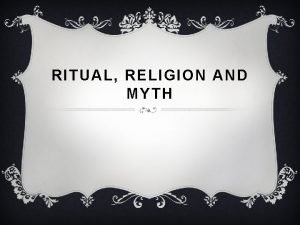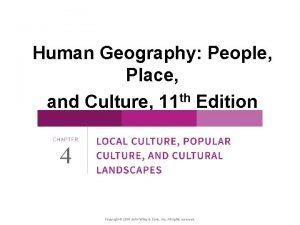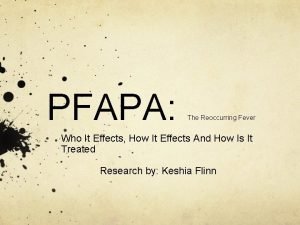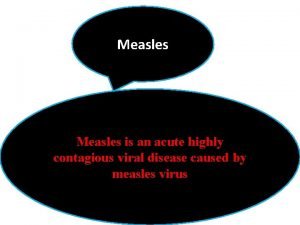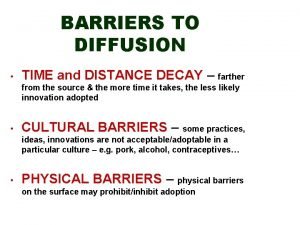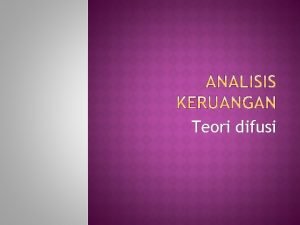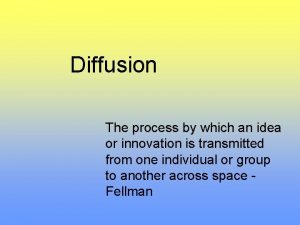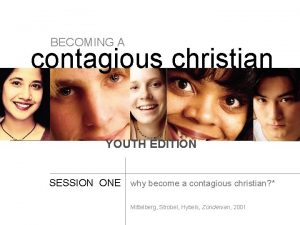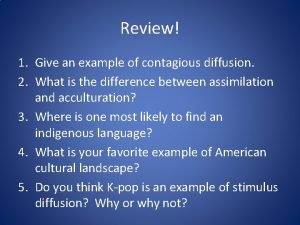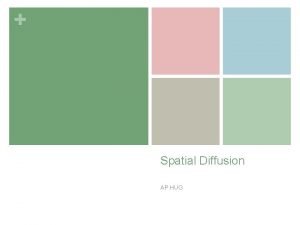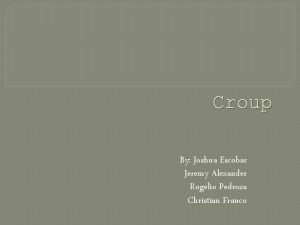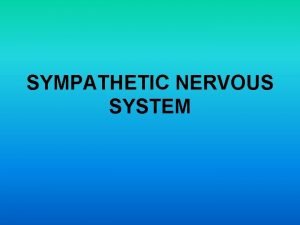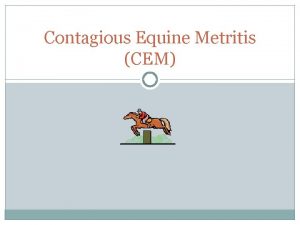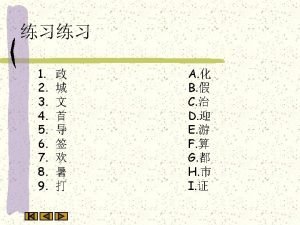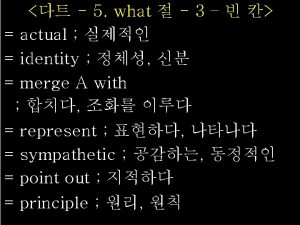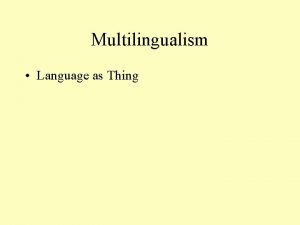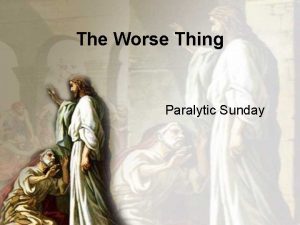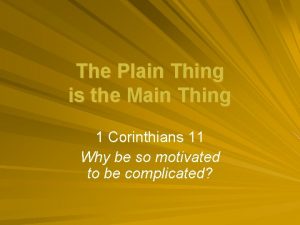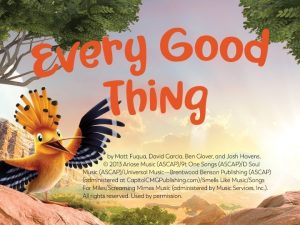385 L 27 Contagious Magic Sympathetic Magic thing
















- Slides: 16

385 L 27

Contagious Magic Sympathetic Magic thing image word garlic eaten garlic hung around the neck amulet shaped like garlic hung around the neck amulet with a picture of garlic hung around the neck “garlic” on a piece of paper hung around the neck “garlic” spoken out loud

• Eurocentrism, racism, cultural imperialism • Narrow mentalist / psychological framework • Failure to consider social context of magic • Failure to consider language as medium of interpersonal contact • Failure to consider structure and role of language as constituting (constructing and interpreting) experience

Mediated Experience mental images (representations) ideas language

Uses of Language Referential/Deictic This frog is bleeding. Performative I curse you, frog! Rufa Publica: her hands, her teeth, her eyes, her arms, her belly, her tits, her chest, her bones, her marrow, her belly, her legs, her mouth, her feet, her forehead, her nails, her fingers, her belly, her navel, her cunt, her womb, her groin: I curse Rufa Publica on these tablets. (ILS 8751)

Performative Language • Uttering a performative is, or is part of, the doing of a kind of action rather than the description of a thing, an action, or a state. • Uttering a performative changes the reality to which it applies. This can include the speaker, the addressee, both, or some general situation: “I promise. ” “I sentence you to death. ” “This meeting is adjourned. ” • Performative utterances can be positive or negative: they can instate or cancel a state of affairs: “I promise. ” / “I take back my promise. ” “I bind you by this spell. ” / ”I release you from this spell. ” • Since performative utterances are not deictic, they are not subject to verifiability: they cannot be true or false, and so are not evaluable on those terms. • Performative utterances are instead evaluable in terms of appropriateness of context and (sometimes) effectiveness.

Uses of Language Referential/Deictic This frog is bleeding. Performative I curse you, frog! Expressive/Emotive Bleed, frog!

Uses of Language Referential/Deictic This frog is bleeding. Performative I curse you, frog! Expressive/Emotive Bleed, frog! Analogical Just as this frog bleeds…

SIMILARITY CONTAGION Sympathetic, Mimetic, Homeopathic Contact A X Y (likeness) = X (original) A Y=A X Y (part) = X (whole) A Y=A X

SIMILARITY CONTACT Sympathetic, Mimetic, Homeopathic Contagious A X Y (likeness) = X (original) A Y=A X Y (part) = X (whole) A Y=A X Metaphor Synecdoche leg of a table sea of troubles curtain of night throne/crown (~ kingdom) boots on the ground 1000 head of cattle

Uses of Language Referential/Deictic This frog is bleeding. Performative I curse you, frog! Expressive/Emotive Bleed, frog! Analogical Just as this frog bleeds… Metaphorical

The heaventree of stars hung with humid nightblue fruit. DARKNES S FRUIT

Some Features of Language • Language as intersubjective, hence immanently social • Language and the constitution of the experienced world • ordering and understanding • naming and organization • creating • Language and techniques for reorganizing / reconstituting the experienced world • translation • linguistic tropes (metaphor, synecdoche…)

Structuralist Assumptions 1. There is a human need to classify in order to understand. 2. Classification tends to be binary: 3. Whatever resists classification causes “categorical” anxiety. 4. Classifications are not always static, but can represent transitional categories. 5. Transition between categories is potentially dangerous. 6. Whatever resists classification or fails to transition successfully from one category to another is “dirt. ” 7. Dirt is taboo; dirt is powerful; dirt is simultaneously attractive and repellant.

Culinary & Sexual Grids PLACE FOOD CHOICE SEXUAL CHOICE Self N/A masturbation + House pets parents, siblings, relations closer than nth (3 rd) degree + Farm livestock relations of nth (3 rd) degree - Field game neighbors, friends - total strangers, aliens, outcasts, freaks + Remote wild animals TABOO

“Dirt” : Matter out of Place GARDEN HOUSE PLATE “soil” “dirt” “filth”
 Animistic definition
Animistic definition Are voodoo dolls contagious magic
Are voodoo dolls contagious magic Spinal meningitis in babies
Spinal meningitis in babies What is expansion diffusion
What is expansion diffusion Is protracted bacterial bronchitis contagious
Is protracted bacterial bronchitis contagious Contagious diffusion
Contagious diffusion Ekaih
Ekaih An acute highly contagious viral disease
An acute highly contagious viral disease Examples of reverse hierarchical diffusion
Examples of reverse hierarchical diffusion Difusi cascade
Difusi cascade Contagious diffusion
Contagious diffusion Becoming a contagious christian video study download
Becoming a contagious christian video study download Example of contagious diffusion
Example of contagious diffusion Diffusion ap hug
Diffusion ap hug Attitude is contagious is yours worth catching
Attitude is contagious is yours worth catching Contagious diffusion
Contagious diffusion Vanessa pedroza
Vanessa pedroza
